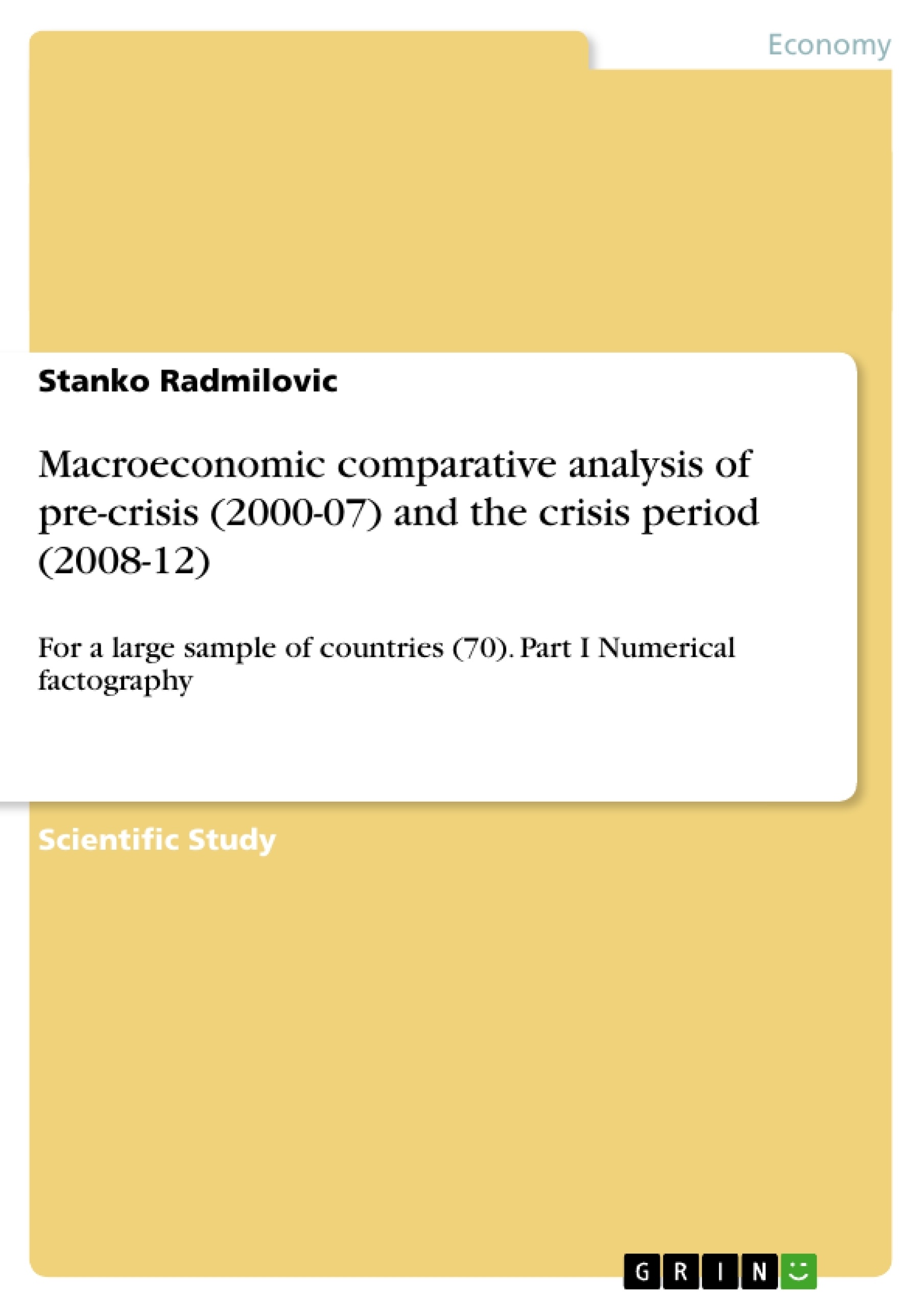Due to the size of this article - numerical factography, Part II - Problemic elaboration of comparative and inter-dependent relationship, the comprehensively treated in a separate articles in the Serbian language in category Srbija i uže i šire okruženje on the site http://radmilovicstanko.com/.
Inhaltsverzeichnis (Table of Contents)
- Numerical Factography
Zielsetzung und Themenschwerpunkte (Objectives and Key Themes)
This article aims to provide a macroeconomic comparative analysis of pre-crisis (2000-07) and the crisis period (2008-12) for a large sample of countries (70). Part I of this analysis focuses on numerical factography, presenting a comprehensive overview of key macroeconomic indicators for each country during both periods. Part II, which is treated in a separate article in the Serbian language, delves into a problematic elaboration of comparative and interdependent relationships between the countries.
- Macroeconomic indicators of pre-crisis and crisis periods for 70 countries
- Comparative analysis of economic performance across different countries
- Identification of potential relationships between key macroeconomic variables
- Exploration of the impact of the global financial crisis on different economies
Zusammenfassung der Kapitel (Chapter Summaries)
The article provides a numerical factography of key macroeconomic indicators for 70 countries during the pre-crisis (2000-07) and crisis (2008-12) periods. These indicators include GDP growth, GDP per capita, total investment, gross national savings, inflation, unemployment, general government consumption, general government gross debt, current account balance, and the average total labor force. The data is presented in a table format, allowing for a direct comparison of the macroeconomic performance of each country across the two periods.
Schlüsselwörter (Keywords)
The main keywords and focus topics of this article include macroeconomic analysis, comparative analysis, pre-crisis period, crisis period, GDP growth, GDP per capita, total investment, gross national savings, inflation, unemployment, general government consumption, general government gross debt, current account balance, and average total labor force. The article highlights the impact of the global financial crisis on the macroeconomic indicators of a large sample of countries, providing insights into the economic performance and resilience of different economies during this challenging period.
- Quote paper
- Professor Doctor Stanko Radmilovic (Author), 2013, Macroeconomic comparative analysis of pre-crisis (2000-07) and the crisis period (2008-12), Munich, GRIN Verlag, https://www.grin.com/document/267533



